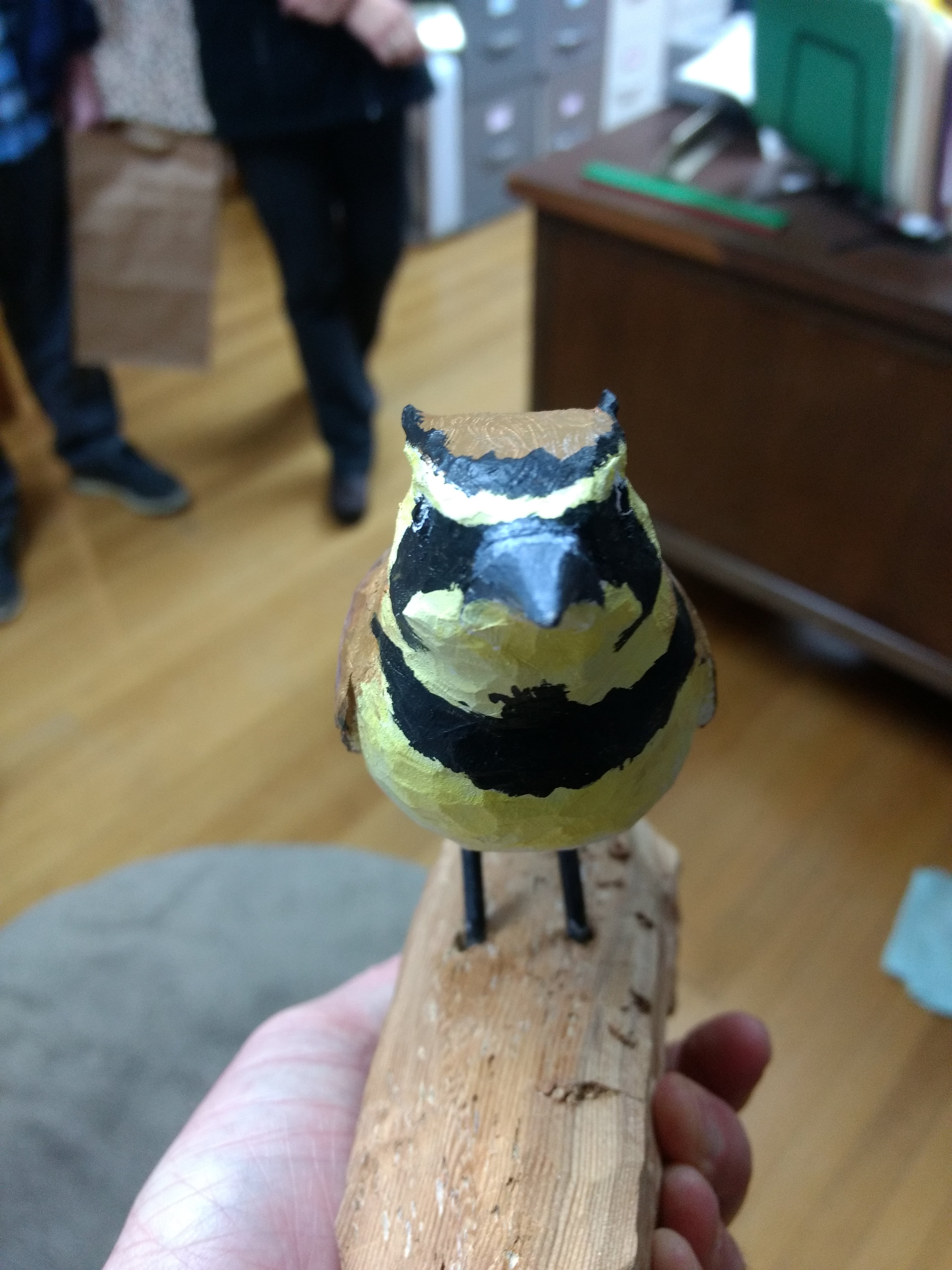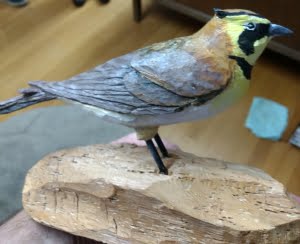
Calling all streaked horned larks!
By Monika Lapinski & Michel Wiman, March 2018
The streaked horned lark is native to Pacific Northwest grasslands, prairies and dunes. While the birds eat a wide variety of seeds and insects, it is a ground-nesting bird, requiring very sparse vegetation free of trees and shrubs. Its historic range from British Columbia through southern Oregon prairies has been drastically reduced due to fire and flood suppression, tree encroachment, agriculture and development. There are only an estimated 1100 to 1600 individuals left in the world. It is federally listed as threatened in Oregon, endangered in Washington, and endangered/extirpated in British Columbia. Eighty percent of the streaked horned lark's remaining range is in the Willamette Valley, and about 70% of those birds live on agricultural and industrial lands. With the loss of native prairies, it has adapted to utilize grass seed farms, airport land, and industrial sites for nesting, which can increase the risk of predation and nest disturbance.
To bring this bird back from the brink, it needs more than sparsely-vegetated habitat. Institute for Applied Ecology and ornithologist Bob Altman (American Bird Conservancy/Avifauna Northwest), are starting a project to more effectively attract birds to nest in suitable areas. In essence, we hope to woo the birds to suitable nesting grounds with streaked horned lark song and adult lookalike decoys.
Monika Lapinski has been hired as IAE's 2018 Streaked Horned Lark Technician. Over the next 5 months she will be monitoring larks at three separate sites that have been chosen for their potential to support breeding larks and meet their needs. Her time will be spent monitoring and attracting larks to more acceptable treeless habitats on public and private lands, including newly restored habitat at Herbert Farm Natural Area just south of Corvallis, Oregon. By setting up lark decoys and broadcasting lark vocalizations, this project will directly contribute to the Streaked Horned Lark Recovery Plan, and hopefully provide significant understanding of managing larks around working agricultural lands.
Oregon artist Howard Bruner has created adult male and female decoys to attract birds. As you can see from the photo, these decoys are remarkable lookalikes. Each site will have also lark song played from devices for four 40-minute intervals (with 10 minutes of silence) in the morning and evening, from March through July. Playback methods have been used by biologists worldwide to attract a wide variety of colonial or territorial bird species, and we think that the larks could potentially react to our playback songs, and set up new breeding sites and/or increase their nesting density.
Our project seeks to help this imperiled species expand its range, while mitigating risks associated with some sites the birds currently utilize. We will be testing the techniques at more appropriate habitats, such as restored properties owned by the City of Corvallis (Herbert Farm and Natural Area), Farmland LP, and private land enrolled in the Wetlands Reserve Program. We will also be working closely with staff from the US Fish and Wildlife Service (Cat Brown and Nate Richardson) and Niles Brinton of the Pacific Bird Habitat Joint Venture.
It will be exciting to see results from this project, and hopefully nests will ensue - there are very few things as awkwardly cute as fledgling larks!
IAE would like to thank the US Fish and Wildlife Service, Farmland LP, and City of Salem for their help with this study.



Restoration
Research
Education
Contact
Main Office:
4950 SW Hout Street
Corvallis, OR 97333-9598
541-753-3099
info@appliedeco.org
Southwest Office:
1202 Parkway Dr. Suite B
Santa Fe, NM 87507
(505) 490-4910
swprogram@appliedeco.org
© 2025 Institute for Applied Ecology | Privacy Policy
